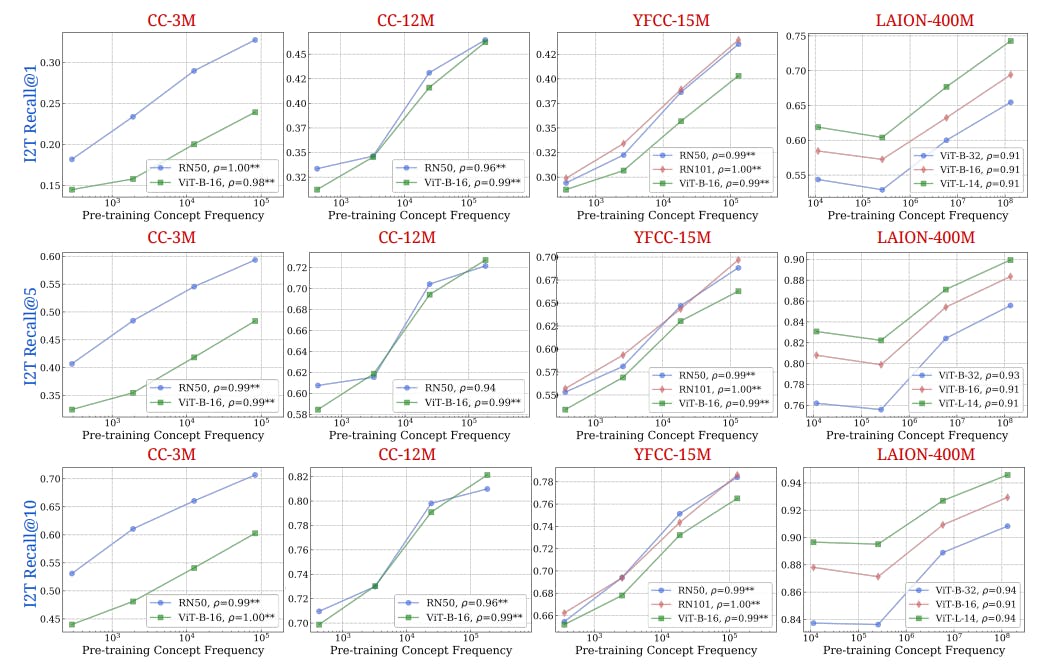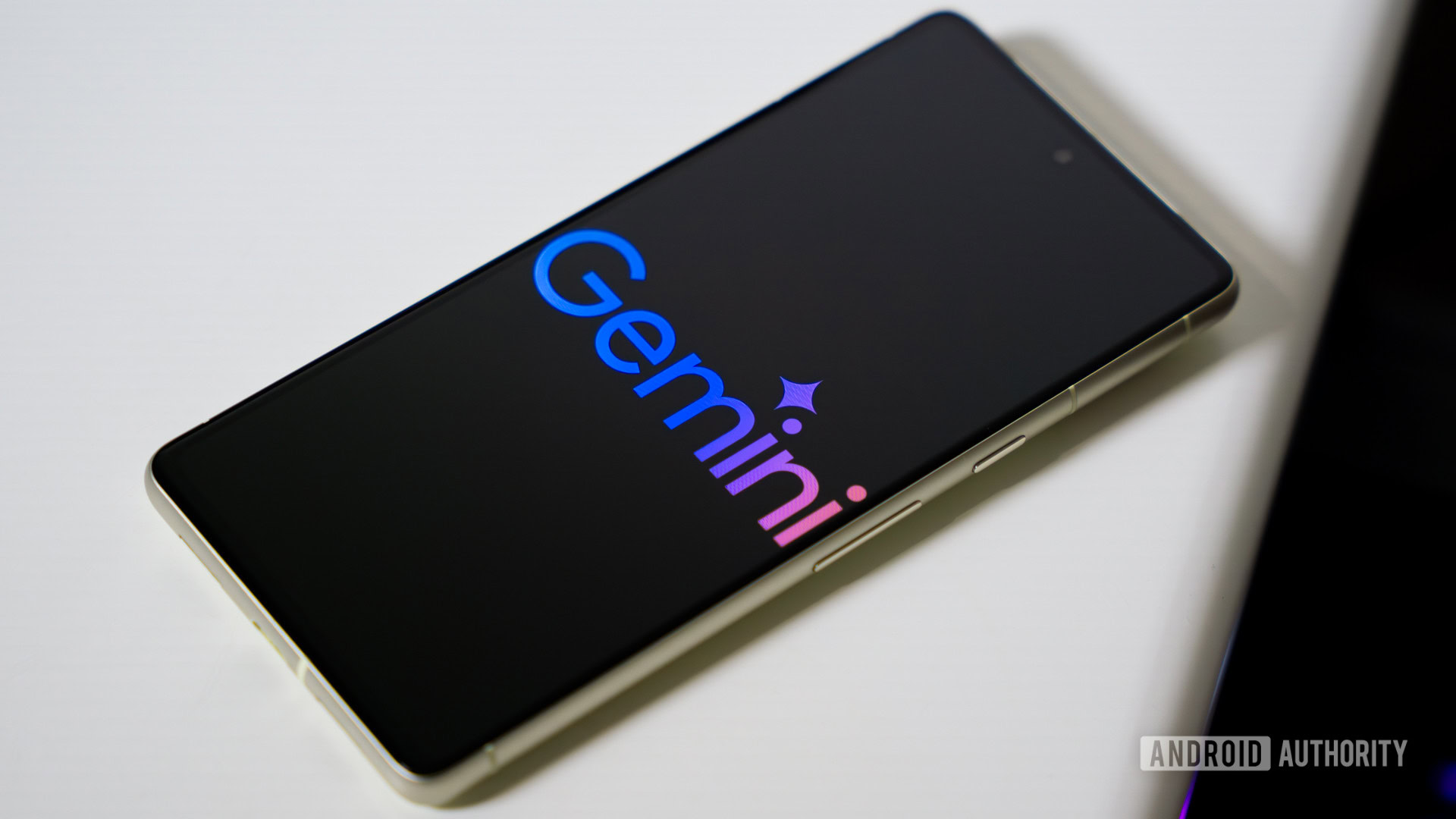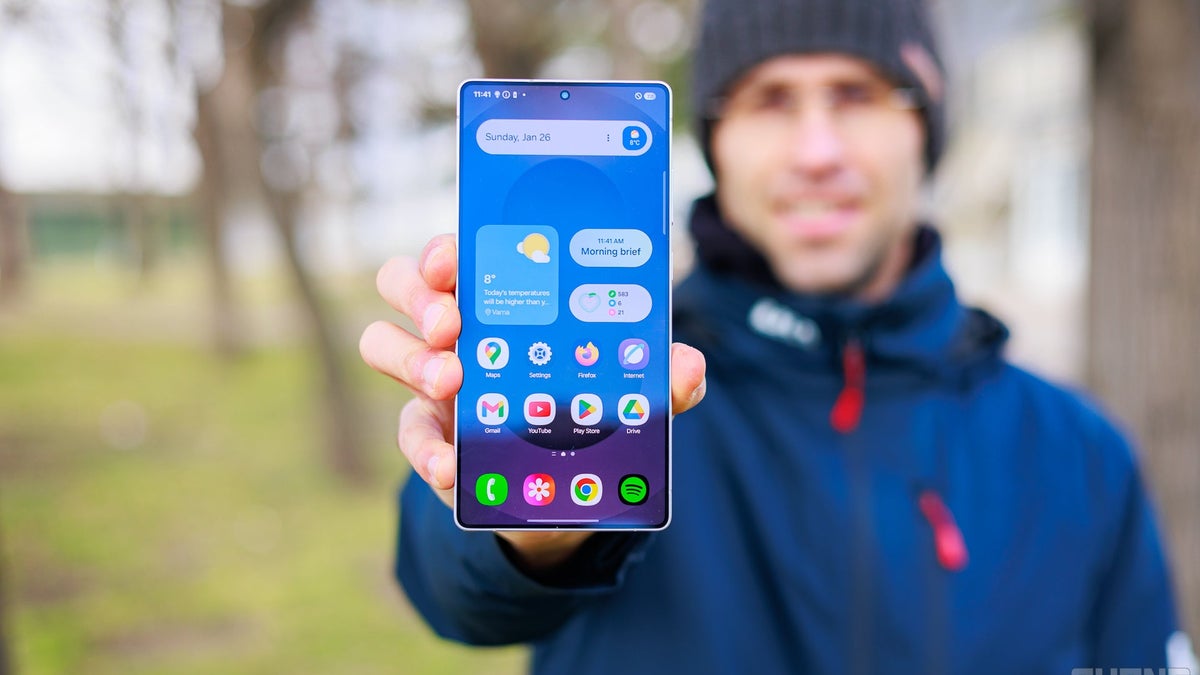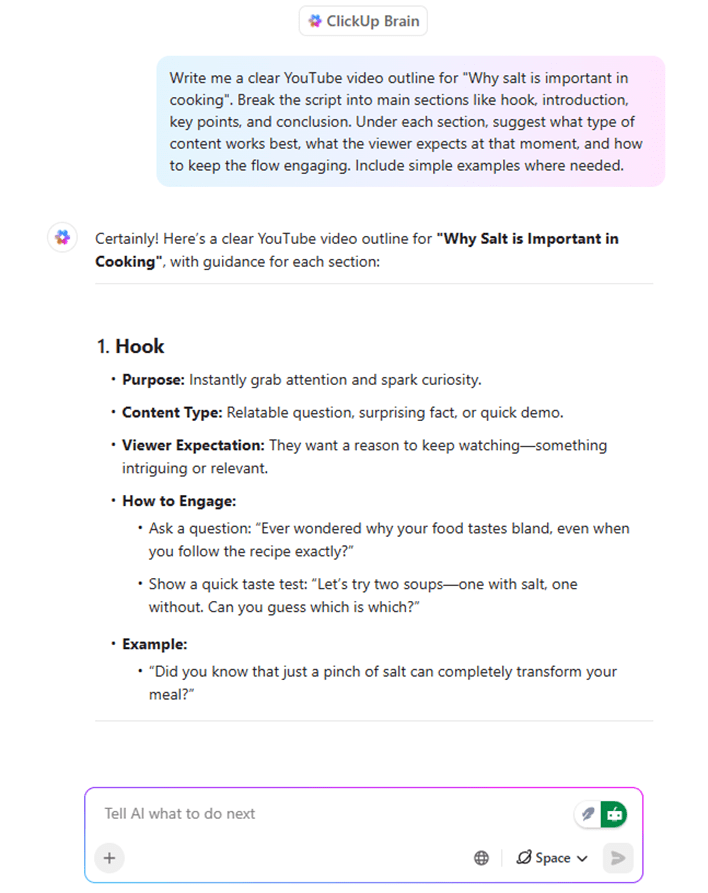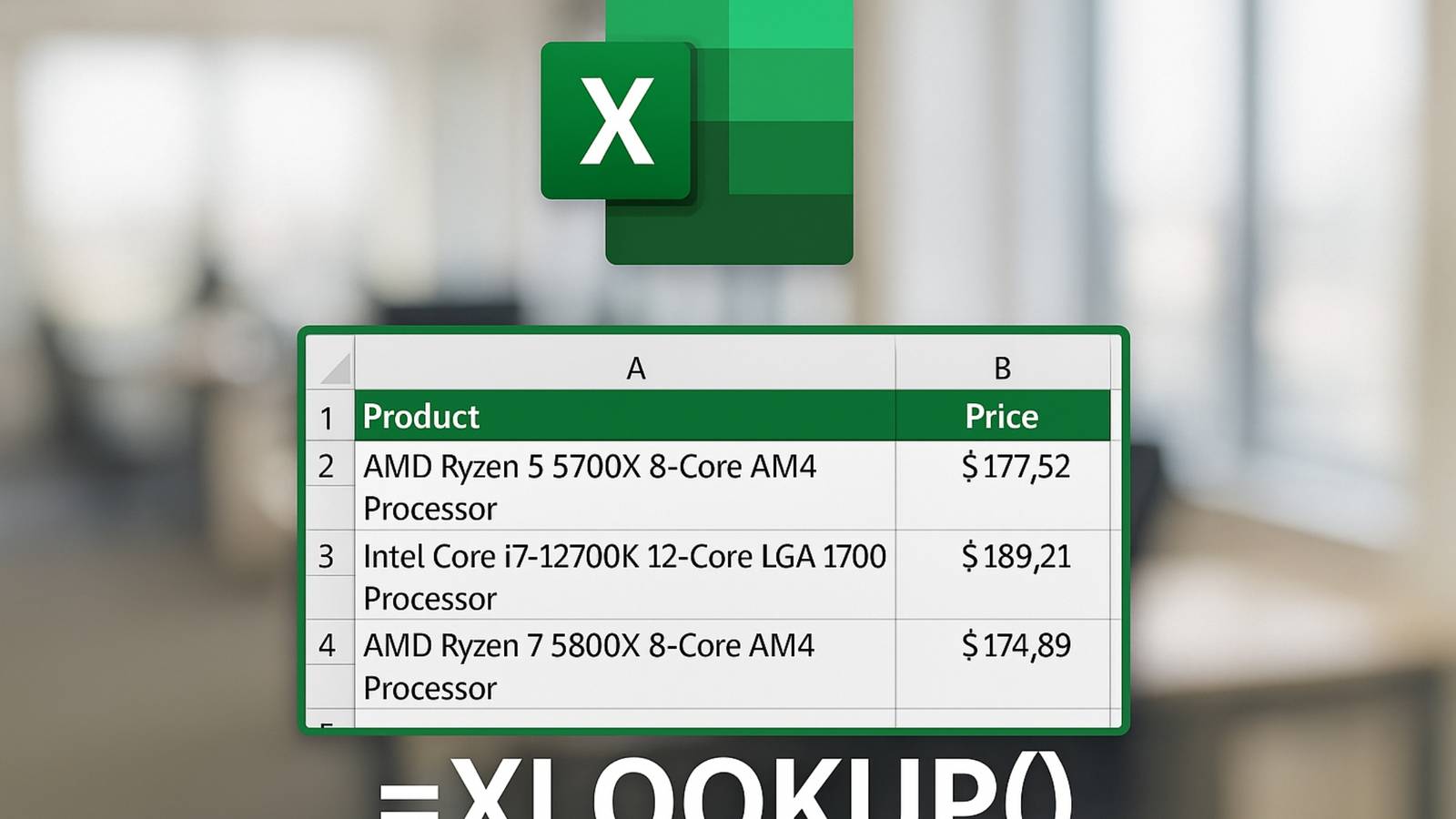Table of Links
Abstract and 1. Introduction
2 Concepts in Pretraining Data and Quantifying Frequency
3 Comparing Pretraining Frequency & “Zero-Shot” Performance and 3.1 Experimental Setup
3.2 Result: Pretraining Frequency is Predictive of “Zero-Shot” Performance
4 Stress-Testing the Concept Frequency-Performance Scaling Trend and 4.1 Controlling for Similar Samples in Pretraining and Downstream Data
4.2 Testing Generalization to Purely Synthetic Concept and Data Distributions
5 Additional Insights from Pretraining Concept Frequencies
6 Testing the Tail: Let It Wag!
7 Related Work
8 Conclusions and Open Problems, Acknowledgements, and References
Part I
Appendix
A. Concept Frequency is Predictive of Performance Across Prompting Strategies
B. Concept Frequency is Predictive of Performance Across Retrieval Metrics
C. Concept Frequency is Predictive of Performance for T2I Models
D. Concept Frequency is Predictive of Performance across Concepts only from Image and Text Domains
E. Experimental Details
F. Why and How Do We Use RAM++?
G. Details about Misalignment Degree Results
H. T2I Models: Evaluation
I. Classification Results: Let It Wag!
8 Conclusions and Open Problems
In this work, we delved into the five pretraining datasets of 34 multimodal vision-language models, analyzing the distribution and composition of concepts within, generating over 300GB of data artifacts that we publicly release. Our findings reveal that across concepts, significant improvements in zero-shot performance require exponentially more data, following a log-linear scaling trend. This pattern persists despite controlling for similarities between pretraining and downstream datasets or even when testing models on entirely synthetic data distributions. Further, all tested models consistently underperformed on the “Let it Wag!” dataset, which we systematically constructed from our findings to test for long-tail concepts. This underlines a critical reassessment of what “zero-shot” generalization entails for multimodal models, highlighting the limitations in their current generalization capabilities. We highlight a few exciting avenues for future research to bridge these gaps or obtain further insights:
Understanding Image-Text Misalignments. One can explore the origins of misalignments between images and texts, such as the limitations of exact matching for concept identification in captions, inaccuracies from the RAM++ tagging model, or captions that are either too noisy or irrelevant.
Investigating Compositional Generalization. The term “zero-shot generalization” often refers to models’ ability for compositional generalization, meaning the ability to understand new combinations of concepts not previously encountered. This is distinct from traditional zero-shot learning and presents an intriguing, yet unresolved challenge: analyzing compositional generalization from a data-centric perspective.
Methods for Bridging the Generalization Gap. Addressing the challenges posed by the long-tail distribution involves improving model generalization to overcome the limited improvement from pretraining we found in our study. Retrieval mechanisms can compensate for the inherent generalization shortcomings of pretrained models, providing a viable path to mitigating the effects of long-tailed pretraining data distributions.
Acknowledgements
The authors would like to thank (in alphabetic order): Jonathan Roberts, Karsten Roth, Mehdi Cherti, Prasanna Mayilvahanan, Shyamgopal Karthik and Thao Nguyen for helpful feedback and providing access to various resources throughout the project. YS would like to thank Nicholas Carlini, Daphne Ippolito, Katherine Lee, Matthew Jagielski, and Milad Nasr. AP is funded by Meta AI Grant No. DFR05540. VU and YS thank the International Max Planck Research School for Intelligent Systems (IMPRS-IS). VU also thanks the European Laboratory for Learning and Intelligent Systems (ELLIS) PhD program for support. PT thanks the Royal Academy of Engineering for their support. AB acknowledges the Amazon Research Award. SA is supported by a Newton Trust Grant. MB acknowledges financial support via the Open Philanthropy Foundation funded by the Good Ventures Foundation. This work was supported by the German Research Foundation (DFG): SFB 1233, Robust Vision: Inference Principles and Neural Mechanisms, TP4, project number: 276693517 and the UKRI grant: Turing AI Fellowship EP/W002981/1. MB is a member of the Machine Learning Cluster of Excellence, funded by the Deutsche Forschungsgemeinschaft (DFG, German Research Foundation) under Germany’s Excellence Strategy – EXC number 2064/1 – Project number 390727645.
References
[1] Lexica search with stable diffusion v1.5 (1b). https://lexica.art/?q=stable+diffusion+1.5. 5, 16
[2] Dreamlike diffusion v1.0. https://huggingface.co/dreamlike-art/dreamlike-diffusion-1.0, . 5
[3] Dreamlike photoreal v2.0. https://huggingface.co/dreamlike-art/dreamlike-photoreal-2.0, . 5, 10
[4] Openjourney v1. https://huggingface.co/prompthero/openjourney, . 5
[5] Openjourney v2. https://huggingface.co/prompthero/openjourney-v4, . 5
[6] Redshift diffusion. https://huggingface.co/nitrosocke/redshift-diffusion. 5
[7] Vintedois (22h) diffusion model v0.1. https://huggingface.co/22h/vintedois-diffusion-v0-1. 5
[8] Human (q5). https://www.wikidata.org/wiki/Q5. 5
[9] Deepfloyd if. https://github.com/deep-floyd/IF, 2023. 5
[10] Amro Abbas, Kushal Tirumala, D´aniel Simig, Surya Ganguli, and Ari S Morcos. Semdedup: Data-efficient learning at web-scale through semantic deduplication. Advances in Neural Information Processing Systems, 2023. 7, 11
[11] Amro Abbas, Evgenia Rusak, Kushal Tirumala, Wieland Brendel, Kamalika Chaudhuri, and Ari S Morcos. Effective pruning of web-scale datasets based on complexity of concept clusters. In International Conference on Learning Representations (ICLR), 2024. 2, 11
[12] Josh Achiam, Steven Adler, Sandhini Agarwal, Lama Ahmad, Ilge Akkaya, Florencia Leoni Aleman, Diogo Almeida, Janko Altenschmidt, Sam Altman, Shyamal Anadkat, et al. Gpt-4 technical report. arXiv preprint arXiv:2303.08774, 2023. 10
[13] Ekin Aky¨urek, Tolga Bolukbasi, Frederick Liu, Binbin Xiong, Ian Tenney, Jacob Andreas, and Kelvin Guu. Tracing knowledge in language models back to the training data. In Findings of the Association for Computational Linguistics: EMNLP, 2022. 11
[14] Marco Bellagente, Manuel Brack, Hannah Teufel, Felix Friedrich, Bj¨orn Deiseroth, Constantin Eichenberg, Andrew M Dai, Robert Baldock, Souradeep Nanda, Koen Oostermeijer, et al. Multifusion: Fusing pre-trained models for multi-lingual, multi-modal image generation. In Advances in Neural Information Processing Systems (NeurIPS), 2023. 5
[15] Thomas Berg, Jiongxin Liu, Seung Woo Lee, Michelle L Alexander, David W Jacobs, and Peter N Belhumeur. Birdsnap: Large-scale fine-grained visual categorization of birds. In Conference on Computer Vision and Pattern Recognition (CVPR), 2014. 4
[16] Ian Berlot-Attwell, A Michael Carrell, Kumar Krishna Agrawal, Yash Sharma, and Naomi Saphra. Attribute diversity determines the systematicity gap in vqa. arXiv preprint arXiv:2311.08695, 2023. 11
[17] James Betker, Gabriel Goh, Li Jing, Tim Brooks, Jianfeng Wang, Linjie Li, Long Ouyang, Juntang Zhuang, Joyce Lee, Yufei Guo, et al. Improving image generation with better captions. In Computer Science, 2023. 1, 11
[18] Abeba Birhane and Vinay Uday Prabhu. Large image datasets: A pyrrhic win for computer vision? In 2021 IEEE Winter Conference on Applications of Computer Vision (WACV), 2021. 11
[19] Abeba Birhane, Sanghyun Han, Vishnu Boddeti, Sasha Luccioni, et al. Into the laion’s den: Investigating hate in multimodal datasets. Advances in Neural Information Processing Systems, 2023. 11
[20] Lukas Bossard, Matthieu Guillaumin, and Luc Van Gool. Food-101–mining discriminative components with random forests. In European Conference on Computer Vision (ECCV), 2014. 4
[21] Max F Burg, Florian Wenzel, Dominik Zietlow, Max Horn, Osama Makansi, Francesco Locatello, and Chris Russell. Image retrieval outperforms diffusion models on data augmentation. Transactions on Machine Learning Research (TMLR), 2023. 11
[22] Nicholas Carlini, Daphne Ippolito, Matthew Jagielski, Katherine Lee, Florian Tramer, and Chiyuan Zhang. Quantifying memorization across neural language models. In The Eleventh International Conference on Learning Representations, 2023. 5
[23] Nicolas Carlini, Jamie Hayes, Milad Nasr, Matthew Jagielski, Vikash Sehwag, Florian Tramer, Borja Balle, Daphne Ippolito, and Eric Wallace. Extracting training data from diffusion models. In 32nd USENIX Security Symposium (USENIX Security 23), pages 5253–5270, 2023. 5
[24] Santiago Castro and Fabian Caba Heilbron. Fitclip: Refining large-scale pretrained image-text models for zero-shot video understanding tasks. British Machine Vision Conference (BMVC), 2022. 1
[25] Stephanie Chan, Adam Santoro, Andrew Lampinen, Jane Wang, Aaditya Singh, Pierre Richemond, James McClelland, and Felix Hill. Data distributional properties drive emergent in-context learning in transformers. Conference on Neural Information Processing Systems (NeurIPS), 2022. 8
[26] Kent K Chang, Mackenzie Cramer, Sandeep Soni, and David Bamman. Speak, memory: An archaeology of books known to chatgpt/gpt-4. arXiv preprint arXiv:2305.00118, 2023. 11
[27] Soravit Changpinyo, Piyush Sharma, Nan Ding, and Radu Soricut. Conceptual 12m: Pushing web-scale image-text pre-training to recognize long-tail visual concepts. In Conference on Computer Vision and Pattern Recognition (CVPR), 2021. 2, 4, 22
[28] Lin Chen, Jisong Li, Xiaoyi Dong, Pan Zhang, Conghui He, Jiaqi Wang, Feng Zhao, and Dahua Lin. Sharegpt4v: Improving large multi-modal models with better captions. arXiv preprint arXiv:2311.12793, 2023. 11
[29] Xi Chen, Xiao Wang, Soravit Changpinyo, AJ Piergiovanni, Piotr Padlewski, Daniel Salz, Sebastian Goodman, Adam Grycner, Basil Mustafa, Lucas Beyer, et al. Pali: A jointly-scaled multilingual language-image model. arXiv preprint arXiv:2209.06794, 2022. 2, 22
[30] Jaemin Cho, Abhay Zala, and Mohit Bansal. Dall-eval: Probing the reasoning skills and social biases of text-to-image generation models. In Proceedings of the IEEE/CVF International Conference on Computer Vision, pages 3043–3054, 2023. 5
[31] Mircea Cimpoi, Subhransu Maji, Iasonas Kokkinos, Sammy Mohamed, and Andrea Vedaldi. Describing textures in the wild. In Conference on Computer Vision and Pattern Recognition (CVPR), 2014. 4
[32] Colin Conwell and Tomer Ullman. Testing relational understanding in text-guided image generation. arXiv preprint arXiv:2208.00005, 2022. 5
[33] dailydalle2023. Instagram account of daily dall-e. https://www.instagram.com/dailydall.e/, 2024. Accessed: 2024-04-03. 4
[34] Boris Dayma, Suraj Patil, Pedro Cuenca, Khalid Saifullah, Tanishq Abraham, Phuc Le Khac, Luke Melas, and Ritobrata Ghosh. Dall·e mini, 7 2021. URL https://github.com/borisdayma/dalle-mini. 5
[35] Jia Deng, Wei Dong, Richard Socher, Li-Jia Li, Kai Li, and Li Fei-Fei. Imagenet: A large-scale hierarchical image database. In Conference on Computer Vision and Pattern Recognition (CVPR), 2009. 3, 4
[36] Alexey Dosovitskiy, Lucas Beyer, Alexander Kolesnikov, Dirk Weissenborn, Xiaohua Zhai, Thomas Unterthiner, Mostafa Dehghani, Matthias Minderer, Georg Heigold, Sylvain Gelly, et al. An image is worth 16×16 words: Transformers for image recognition at scale. arXiv preprint arXiv:2010.11929, 2020. 4
[37] Ling Du, Anthony TS Ho, and Runmin Cong. Perceptual hashing for image authentication: A survey. Signal Processing: Image Communication, 2020. 11
[38] Yanai Elazar, Nora Kassner, Shauli Ravfogel, Amir Feder, Abhilasha Ravichander, Marius Mosbach, Yonatan Belinkov, Hinrich Sch¨utze, and Yoav Goldberg. Measuring causal effects of data statistics on language model’sfactual’predictions. arXiv preprint arXiv:2207.14251, 2022. 11
[39] Yanai Elazar, Akshita Bhagia, Ian Magnusson, Abhilasha Ravichander, Dustin Schwenk, Alane Suhr, Pete Walsh, Dirk Groeneveld, Luca Soldaini, Sameer Singh, et al. What’s in my big data? arXiv preprint arXiv:2310.20707, 2023. 11
[40] Rahim Entezari, Mitchell Wortsman, Olga Saukh, M Moein Shariatnia, Hanie Sedghi, and Ludwig Schmidt. The role of pre-training data in transfer learning. arXiv preprint arXiv:2302.13602, 2023. 11
[41] Patrick Esser, Sumith Kulal, Andreas Blattmann, Rahim Entezari, Jonas M¨uller, Harry Saini, Yam Levi, Dominik Lorenz, Axel Sauer, Frederic Boesel, et al. Scaling rectified flow transformers for high-resolution image synthesis. arXiv preprint arXiv:2403.03206, 2024. 1
[42] Alex Fang, Gabriel Ilharco, Mitchell Wortsman, Yuhao Wan, Vaishaal Shankar, Achal Dave, and Ludwig Schmidt. Data determines distributional robustness in contrastive language image pre-training (clip). arXiv preprint arXiv:2205.01397, 2022. 2, 11
[43] Alex Fang, Albin Madappally Jose, Amit Jain, Ludwig Schmidt, Alexander Toshev, and Vaishaal Shankar. Data filtering networks, 2023. 22
[44] Li Fei-Fei, Rob Fergus, and Pietro Perona. Learning generative visual models from few training examples: An incremental bayesian approach tested on 101 object categories. In Conference on Computer Vision and Pattern Recognition Workshop (CVPR-W), 2004. 4
[45] Jerry A Fodor and Zenon W Pylyshyn. Connectionism and cognitive architecture: A critical analysis. Cognition, 28(1-2):3–71, 1988. 11
[46] Samir Yitzhak Gadre, Gabriel Ilharco, Alex Fang, Jonathan Hayase, Georgios Smyrnis, Thao Nguyen, Ryan Marten, Mitchell Wortsman, Dhruba Ghosh, Jieyu Zhang, et al. Datacomp: In search of the next generation of multimodal datasets. arXiv preprint arXiv:2304.14108, 2023. 1, 2, 11, 22
[47] Noa Garcia, Yusuke Hirota, Yankun Wu, and Yuta Nakashima. Uncurated image-text datasets: Shedding light on demographic bias. In Proceedings of the IEEE/CVF Conference on Computer Vision and Pattern Recognition, pages 6957–6966, 2023. 11
[48] Shashank Goel, Hritik Bansal, Sumit Bhatia, Ryan Rossi, Vishwa Vinay, and Aditya Grover. Cyclip: Cyclic contrastive language-image pretraining. arXiv preprint arXiv:2205.14459, 2022. 1, 4
[49] Gregory Griffin, Alex Holub, and Pietro Perona. Caltech-256 object category dataset. 2007. 4
[50] Dylan Jasper Hadfield-Menell. The Principal–Agent Alignment Problem in Artificial Intelligence. University of California, Berkeley, 2021. 5
[51] Hasan Abed Al Kader Hammoud, Hani Itani, Fabio Pizzati, Philip Torr, Adel Bibi, and Bernard Ghanem. Synthclip: Are we ready for a fully synthetic clip training? arXiv preprint arXiv:2402.01832, 2024. 1, 2, 8, 22
[52] Yaru Hao, Zewen Chi, Li Dong, and Furu Wei. Optimizing prompts for text-to-image generation. Advances in Neural Information Processing Systems, 36, 2024. 5, 10
[53] Kaiming He, Xiangyu Zhang, Shaoqing Ren, and Jian Sun. Deep residual learning for image recognition. In Proceedings of the IEEE conference on computer vision and pattern recognition, pages 770–778, 2016. 4
[54] Ruifei He, Shuyang Sun, Xin Yu, Chuhui Xue, Wenqing Zhang, Philip Torr, Song Bai, and Xiaojuan Qi. Is synthetic data from generative models ready for image recognition? arXiv preprint arXiv:2210.07574, 2022. 11
[55] Patrick Helber, Benjamin Bischke, Andreas Dengel, and Damian Borth. Eurosat: A novel dataset and deep learning benchmark for land use and land cover classification. IEEE Journal of Selected Topics in Applied Earth Observations and Remote Sensing, 12(7):2217–2226, 2019. 4
[56] Jack Hessel, Ari Holtzman, Maxwell Forbes, Ronan Le Bras, and Yejin Choi. Clipscore: A reference-free evaluation metric for image captioning. arXiv preprint arXiv:2104.08718, 2021. 12
[57] Jack Hessel, Ari Holtzman, Maxwell Forbes, Ronan Le Bras, and Yejin Choi. Clipscore: A reference-free evaluation metric for image captioning, 2022. 5
[58] Matthew Honnibal and Ines Montani. spacy 2: Natural language understanding with bloom embeddings, convolutional neural networks and incremental parsing. To appear, 7(1):411–420, 2017. 3
[59] Xinyu Huang, Yi-Jie Huang, Youcai Zhang, Weiwei Tian, Rui Feng, Yuejie Zhang, Yanchun Xie, Yaqian Li, and Lei Zhang. Open-set image tagging with multi-grained text supervision. arXiv e-prints, pages arXiv–2310, 2023. 3, 12
[60] Dieuwke Hupkes, Verna Dankers, Mathijs Mul, and Elia Bruni. Compositionality decomposed: How do neural networks generalise? Journal of Artificial Intelligence Research, 67:757–795, 2020. 11
[61] Gabriel Ilharco, Mitchell Wortsman, Ross Wightman, Cade Gordon, Nicholas Carlini, Rohan Taori, Achal Dave, Vaishaal Shankar, Hongseok Namkoong, John Miller, Hannaneh Hajishirzi, Ali Farhadi, and Ludwig Schmidt. Openclip, July 2021. URL https://doi.org/10.5281/zenodo.5143773. If you use this software, please cite it as below. 4
[62] Nikhil Kandpal, Haikang Deng, Adam Roberts, Eric Wallace, and Colin Raffel. Large language models struggle to learn long-tail knowledge. In International Conference on Machine Learning (ICML), pages 15696–15707. PMLR, 2023. 2, 6, 7, 11
[63] Minguk Kang, Jun-Yan Zhu, Richard Zhang, Jaesik Park, Eli Shechtman, Sylvain Paris, and Taesung Park. Scaling up gans for text-to-image synthesis. In Conference on Computer Vision and Pattern Recognition (CVPR), 2023. 5
[64] Wonjae Kim, Bokyung Son, and Ildoo Kim. Vilt: Vision-and-language transformer without convolution or region supervision. In International Conference on Machine Learning (ICML), 2021. 1
[65] Kimmo Koskenniemi. A general computational model for word-form recognition and production. In 10th International Conference on Computational Linguistics and 22nd Annual Meeting of the Association for Computational Linguistics. The Association for Computational Linguistics, 1984. 3
[66] Jonathan Krause, Michael Stark, Jia Deng, and Li Fei-Fei. 3d object representations for fine-grained categorization. In International Conference on Computer Vision Workshop (ICCV-W), 2013. 4
[67] Alex Krizhevsky, Geoffrey Hinton, et al. Learning multiple layers of features from tiny images. 2009. 4
[68] Zhengfeng Lai, Haotian Zhang, Wentao Wu, Haoping Bai, Aleksei Timofeev, Xianzhi Du, Zhe Gan, Jiulong Shan, Chen-Nee Chuah, Yinfei Yang, et al. From scarcity to efficiency: Improving clip training via visual-enriched captions. arXiv preprint arXiv:2310.07699, 2023. 11
[69] Christoph H Lampert, Hannes Nickisch, and Stefan Harmeling. Attribute-based classification for zero-shot visual object categorization. IEEE transactions on pattern analysis and machine intelligence, 36(3):453–465, 2013. 1
[70] Katherine Lee, Daphne Ippolito, Andrew Nystrom, Chiyuan Zhang, Douglas Eck, Chris Callison-Burch, and Nicholas Carlini. Deduplicating training data makes language models better. In Proceedings of the 60th Annual Meeting of the Association for Computational Linguistics (Volume 1: Long Papers), pages 8424–8445, 2022. 5
[71] Tony Lee, Michihiro Yasunaga, Chenlin Meng, Yifan Mai, Joon Sung Park, Agrim Gupta, Yunzhi Zhang, Deepak Narayanan, Hannah Teufel, Marco Bellagente, et al. Holistic evaluation of text-to-image models. Advances in Neural Information Processing Systems, 36, 2023. 4, 5
[72] Junnan Li, Ramprasaath Selvaraju, Akhilesh Gotmare, Shafiq Joty, Caiming Xiong, and Steven Chu Hong Hoi. Align before fuse: Vision and language representation learning with momentum distillation. Conference on Neural Information Processing Systems (NeurIPS), 2021. 1
[73] Tsung-Yi Lin, Michael Maire, Serge Belongie, James Hays, Pietro Perona, Deva Ramanan, Piotr Doll´ar, and C Lawrence Zitnick. Microsoft coco: Common objects in context. In European Conference on Computer Vision (ECCV), 2014. 4, 5
[74] Shayne Longpre, Gregory Yauney, Emily Reif, Katherine Lee, Adam Roberts, Barret Zoph, Denny Zhou, Jason Wei, Kevin Robinson, David Mimno, et al. A pretrainer’s guide to training data: Measuring the effects of data age, domain coverage, quality, & toxicity. arXiv preprint arXiv:2305.13169, 2023. 2, 11
[75] Anas Mahmoud, Mostafa Elhoushi, Amro Abbas, Yu Yang, Newsha Ardalani, Hugh Leather, and Ari Morcos. Sieve: Multimodal dataset pruning using image captioning models. arXiv preprint arXiv:2310.02110, 2023. 4, 8
[76] Pratyush Maini, Sachin Goyal, Zachary C Lipton, J Zico Kolter, and Aditi Raghunathan. T-mars: Improving visual representations by circumventing text feature learning. arXiv preprint arXiv:2307.03132, 2023. 4, 8, 11
[77] Subhransu Maji, Esa Rahtu, Juho Kannala, Matthew Blaschko, and Andrea Vedaldi. Fine-grained visual classification of aircraft. arXiv preprint arXiv:1306.5151, 2013. 4
[78] Daniela Massiceti, Camilla Longden, Agnieszka Slowik, Samuel Wills, Martin Grayson, and Cecily Morrison. Explaining clip’s performance disparities on data from blind/low vision users. arXiv preprint arXiv:2311.17315, 2023. 11
[79] Prasanna Mayilvahanan, Thadd¨aus Wiedemer, Evgenia Rusak, Matthias Bethge, and Wieland Brendel. Does clip’s generalization performance mainly stem from high train-test similarity? arXiv preprint arXiv:2310.09562, 2023. 1, 2, 7, 11
[80] Matthias Minderer, Alexey Gritsenko, and Neil Houlsby. Scaling open-vocabulary object detection. Advances in Neural Information Processing Systems, 36, 2023. 12
[81] Norman Mu, Alexander Kirillov, David Wagner, and Saining Xie. Slip: Self-supervision meets language-image pre-training. arXiv preprint arXiv:2112.12750, 2021. 4
[82] Thao Nguyen, Gabriel Ilharco, Mitchell Wortsman, Sewoong Oh, and Ludwig Schmidt. Quality not quantity: On the interaction between dataset design and robustness of clip. arXiv preprint arXiv:2208.05516, 2022. 2, 4, 11
[83] Thao Nguyen, Samir Yitzhak Gadre, Gabriel Ilharco, Sewoong Oh, and Ludwig Schmidt. Improving multimodal datasets with image captioning. Advances in Neural Information Processing Systems, 2023. 2, 4, 11
[84] Maria-Elena Nilsback and Andrew Zisserman. Automated flower classification over a large number of classes. In 2008 Sixth Indian Conference on Computer Vision, Graphics & Image Processing, pages 722–729. IEEE, 2008. 4
[85] Maxime Oquab, Timoth´ee Darcet, Th´eo Moutakanni, Huy Vo, Marc Szafraniec, Vasil Khalidov, Pierre Fernandez, Daniel Haziza, Francisco Massa, Alaaeldin El-Nouby, et al. Dinov2: Learning robust visual features without supervision. arXiv preprint arXiv:2304.07193, 2023. 16
[86] Shubham Parashar, Zhiqiu Lin, Tian Liu, Xiangjue Dong, Yanan Li, Deva Ramanan, James Caverlee, and Shu Kong. The neglected tails of vision-language models. CVPR, 2024. 11
[87] Omkar M Parkhi, Andrea Vedaldi, Andrew Zisserman, and CV Jawahar. Cats and dogs. In Conference on Computer Vision and Pattern Recognition (CVPR), 2012. 4
[88] Steven T Piantadosi. Zipf’s word frequency law in natural language: A critical review and future directions. Psychonomic bulletin & review, 21:1112–1130, 2014. 8
[89] Dustin Podell, Zion English, Kyle Lacey, Andreas Blattmann, Tim Dockhorn, Jonas M¨uller, Joe Penna, and Robin Rombach. Sdxl: Improving latent diffusion models for high-resolution image synthesis. arXiv preprint arXiv:2307.01952, 2023. 10, 16
[90] Ameya Prabhu, Hasan Abed Al Kader Hammoud, Ser-Nam Lim, Bernard Ghanem, Philip HS Torr, and Adel Bibi. From categories to classifier: Name-only continual learning by exploring the web. arXiv preprint arXiv:2311.11293, 2023. 9, 11
[91] Alec Radford, Jong Wook Kim, Chris Hallacy, Aditya Ramesh, Gabriel Goh, Sandhini Agarwal, Girish Sastry, Amanda Askell, Pamela Mishkin, Jack Clark, et al. Learning transferable visual models from natural language supervision. In International Conference on Machine Learning (ICML), 2021. 1, 2, 4, 10, 11, 22
[92] Vivek Ramanujan, Thao Nguyen, Sewoong Oh, Ali Farhadi, and Ludwig Schmidt. On the connection between pre-training data diversity and fine-tuning robustness. Advances in Neural Information Processing Systems, 36, 2024. 11
[93] Aditya Ramesh, Mikhail Pavlov, Gabriel Goh, Scott Gray, Chelsea Voss, Alec Radford, Mark Chen, and Ilya Sutskever. Zero-shot text-to-image generation. In International Conference on Machine Learning (ICML), 2021. 1
[94] Yasaman Razeghi, Robert L Logan IV, Matt Gardner, and Sameer Singh. Impact of pretraining term frequencies on few-shot numerical reasoning. In Findings of the Association for Computational Linguistics: EMNLP 2022, pages 840–854, 2022. 2, 6, 7, 11
[95] Yasaman Razeghi, Raja Sekhar Reddy Mekala, Robert L Logan Iv, Matt Gardner, and Sameer Singh. Snoopy: An online interface for exploring the effect of pretraining term frequencies on few-shot lm performance. In Proceedings of the 2022 Conference on Empirical Methods in Natural Language Processing: System Demonstrations, pages 389–395, 2022. 11
[96] Robin Rombach, Andreas Blattmann, Dominik Lorenz, Patrick Esser, and Bj¨orn Ommer. High-resolution image synthesis with latent diffusion models. In Conference on Computer Vision and Pattern Recognition (CVPR), 2022. 1, 5, 10, 16
[97] Kim Saehoon, Cho Sanghun, Kim Chiheon, Doyup Lee, and Woonhyuk Baek. mindall-e on conceptual captions. https://github.com/kakaobrain/minDALL-E, 2021. 5
[98] Chitwan Saharia, William Chan, Saurabh Saxena, Lala Li, Jay Whang, Emily L Denton, Kamyar Ghasemipour, Raphael Gontijo Lopes, Burcu Karagol Ayan, Tim Salimans, et al. Photorealistic text-to-image diffusion models with deep language understanding. Advances in Neural Information Processing Systems, 35:36479–36494, 2022. 5
[99] Dvir Samuel, Rami Ben-Ari, Simon Raviv, Nir Darshan, and Gal Chechik. Generating images of rare concepts using pretrained diffusion models. arXiv preprint arXiv:2304.14530, 18, 2023. 11
[100] Shibani Santurkar, Yann Dubois, Rohan Taori, Percy Liang, and Tatsunori Hashimoto. Is a caption worth a thousand images? a controlled study for representation learning. arXiv preprint arXiv:2207.07635, 2022. 11
[101] Mert B¨ulent Sarıyıldız, Karteek Alahari, Diane Larlus, and Yannis Kalantidis. Fake it till you make it: Learning transferable representations from synthetic imagenet clones. In Conference on Computer Vision and Pattern Recognition (CVPR), 2023. 11
[102] Christoph Schuhmann, Richard Vencu, Romain Beaumont, Robert Kaczmarczyk, Clayton Mullis, Aarush Katta, Theo Coombes, Jenia Jitsev, and Aran Komatsuzaki. Laion-400m: Open dataset of clip-filtered 400 million image-text pairs. arXiv preprint arXiv:2111.02114, 2021. 2, 4, 5, 22
[103] Christoph Schuhmann, Romain Beaumont, Richard Vencu, Cade Gordon, Ross Wightman, Mehdi Cherti, Theo Coombes, Aarush Katta, Clayton Mullis, Mitchell Wortsman, et al. Laion-5b: An open large-scale dataset for training next generation image-text models. Advances in Neural Information Processing Systems, 35:25278–25294, 2022. 2, 4, 22
[104] Preethi Seshadri, Sameer Singh, and Yanai Elazar. The bias amplification paradox in text-to-image generation. arXiv preprint arXiv:2308.00755, 2023. 11
[105] Hassan Shahmohammadi, Adhiraj Ghosh, and Hendrik Lensch. Vipe: Visualise pretty-much everything. In Proceedings of the 2023 Conference on Empirical Methods in Natural Language Processing, pages 5477–5494, 2023. 16
[106] Hanyin Shao, Jie Huang, Shen Zheng, and Kevin Chen-Chuan Chang. Quantifying association capabilities of large language models and its implications on privacy leakage. arXiv preprint arXiv:2305.12707, 2023. 11
[107] Piyush Sharma, Nan Ding, Sebastian Goodman, and Radu Soricut. Conceptual captions: A cleaned, hypernymed, image alt-text dataset for automatic image captioning. In Proceedings of the 56th Annual Meeting of the Association for Computational Linguistics (Volume 1: Long Papers), pages 2556–2565, 2018. 2, 4, 22
[108] Khurram Soomro, Amir Roshan Zamir, and Mubarak Shah. Ucf101: A dataset of 101 human actions classes from videos in the wild. arXiv preprint arXiv:1212.0402, 2012. 4
[109] Ben Sorscher, Robert Geirhos, Shashank Shekhar, Surya Ganguli, and Ari Morcos. Beyond neural scaling laws: beating power law scaling via data pruning. Advances in Neural Information Processing Systems, 35: 19523–19536, 2022. 11
[110] Student. Probable error of a correlation coefficient. Biometrika, pages 302–310, 1908. 6
[111] Christian Szegedy, Wei Liu, Yangqing Jia, Pierre Sermanet, Scott Reed, Dragomir Anguelov, Dumitru Erhan, Vincent Vanhoucke, and Andrew Rabinovich. Going deeper with convolutions. In Conference on Computer Vision and Pattern Recognition (CVPR), 2015. 11
[112] Gemini Team, Rohan Anil, Sebastian Borgeaud, Yonghui Wu, Jean-Baptiste Alayrac, Jiahui Yu, Radu Soricut, Johan Schalkwyk, Andrew M Dai, Anja Hauth, et al. Gemini: a family of highly capable multimodal models. arXiv preprint arXiv:2312.11805, 2023. 10
[113] Bart Thomee, David A Shamma, Gerald Friedland, Benjamin Elizalde, Karl Ni, Douglas Poland, Damian Borth, and Li-Jia Li. Yfcc100m: The new data in multimedia research. Communications of the ACM, 59(2):64–73, 2016. 2, 4, 22
[114] Tristan Thrush, Ryan Jiang, Max Bartolo, Amanpreet Singh, Adina Williams, Douwe Kiela, and Candace Ross. Winoground: Probing vision and language models for visio-linguistic compositionality. In Conference on Computer Vision and Pattern Recognition (CVPR), 2022. 5
[115] Yonglong Tian, Lijie Fan, Phillip Isola, Huiwen Chang, and Dilip Krishnan. Stablerep: Synthetic images from text-to-image models make strong visual representation learners. Conference on Neural Information Processing Systems (NeurIPS), 2023. 11
[116] Kushal Tirumala, Daniel Simig, Armen Aghajanyan, and Ari Morcos. D4: Improving llm pretraining via document de-duplication and diversification. Advances in Neural Information Processing Systems, 36, 2024. 11
[117] Vishaal Udandarao, Abhishek Maiti, Deepak Srivatsav, Suryatej Reddy Vyalla, Yifang Yin, and Rajiv Ratn Shah. Cobra: Contrastive bi-modal representation algorithm. arXiv preprint arXiv:2005.03687, 2020. 1
[118] Vishaal Udandarao, Max F Burg, Samuel Albanie, and Matthias Bethge. Visual data-type understanding does not emerge from scaling vision-language models. arXiv preprint arXiv:2310.08577, 2023. 11
[119] Vishaal Udandarao, Ankush Gupta, and Samuel Albanie. Sus-x: Training-free name-only transfer of visionlanguage models. In International Conference on Computer Vision (ICCV), 2023. 11
[120] Pavan Kumar Anasosalu Vasu, Hadi Pouransari, Fartash Faghri, Raviteja Vemulapalli, and Oncel Tuzel. Mobileclip: Fast image-text models through multi-modal reinforced training. arXiv preprint arXiv:2311.17049, 2023. 11
[121] Catherine Wah, Steve Branson, Peter Welinder, Pietro Perona, and Serge Belongie. The caltech-ucsd birds-200- 2011 dataset. 2011. 4
[122] Steven Walfish. A review of statistical outlier methods. Pharmaceutical technology, 30(11):82, 2006. 6
[123] Jianxiong Xiao, James Hays, Krista A Ehinger, Aude Oliva, and Antonio Torralba. Sun database: Large-scale scene recognition from abbey to zoo. In Conference on Computer Vision and Pattern Recognition (CVPR), 2010. 4
[124] Hu Xu, Saining Xie, Po-Yao Huang, Licheng Yu, Russell Howes, Gargi Ghosh, Luke Zettlemoyer, and Christoph Feichtenhofer. Cit: Curation in training for effective vision-language data, 2023. 4, 8, 11
[125] Hu Xu, Saining Xie, Xiaoqing Ellen Tan, Po-Yao Huang, Russell Howes, Vasu Sharma, Shang-Wen Li, Gargi Ghosh, Luke Zettlemoyer, and Christoph Feichtenhofer. Demystifying clip data, 2023. 2, 11, 22
[126] Jinyu Yang, Jiali Duan, Son Tran, Yi Xu, Sampath Chanda, Liqun Chen, Belinda Zeng, Trishul Chilimbi, and Junzhou Huang. Vision-language pre-training with triple contrastive learning. In Conference on Computer Vision and Pattern Recognition (CVPR), 2022. 1
[127] Gregory Yauney, Emily Reif, and David Mimno. Data similarity is not enough to explain language model performance. arXiv preprint arXiv:2311.09006, 2023. 2, 7, 11
[128] Peter Young, Alice Lai, Micah Hodosh, and Julia Hockenmaier. From image descriptions to visual denotations: New similarity metrics for semantic inference over event descriptions. Transactions of the Association for Computational Linguistics, 2:67–78, 2014. 4
[129] Jiahui Yu, Zirui Wang, Vijay Vasudevan, Legg Yeung, Mojtaba Seyedhosseini, and Yonghui Wu. Coca: Contrastive captioners are image-text foundation models. arXiv preprint arXiv:2205.01917, 2022. 1
[130] Jiahui Yu, Yuanzhong Xu, Jing Yu Koh, Thang Luong, Gunjan Baid, Zirui Wang, Vijay Vasudevan, Alexander Ku, Yinfei Yang, Burcu Karagol Ayan, et al. Scaling autoregressive models for content-rich text-to-image generation. arXiv preprint arXiv:2206.10789, 2(3):5, 2022. 5
[131] Qiying Yu, Quan Sun, Xiaosong Zhang, Yufeng Cui, Fan Zhang, Xinlong Wang, and Jingjing Liu. Capsfusion: Rethinking image-text data at scale. arXiv preprint arXiv:2310.20550, 2023. 11
[132] Xiaohua Zhai, Xiao Wang, Basil Mustafa, Andreas Steiner, Daniel Keysers, Alexander Kolesnikov, and Lucas Beyer. Lit: Zero-shot transfer with locked-image text tuning. In Conference on Computer Vision and Pattern Recognition (CVPR), 2022. 1
[133] Xiaohua Zhai, Basil Mustafa, Alexander Kolesnikov, and Lucas Beyer. Sigmoid loss for language image pre-training. arXiv preprint arXiv:2303.15343, 2023. 1
[134] Renrui Zhang, Xiangfei Hu, Bohao Li, Siyuan Huang, Hanqiu Deng, Yu Qiao, Peng Gao, and Hongsheng Li. Prompt, generate, then cache: Cascade of foundation models makes strong few-shot learners. In Conference on Computer Vision and Pattern Recognition (CVPR), 2023. 11
[135] Yunhua Zhang, Hazel Doughty, and Cees GM Snoek. Low-resource vision challenges for foundation models. arXiv preprint arXiv:2401.04716, 2024. 11
[136] George Kingsley Zipf. Human behavior and the principle of least effort: An introduction to human ecology. Ravenio books, 2016. 8
Authors:
(1) Vishaal Udandarao, Tubingen AI Center, University of Tubingen, University of Cambridge, and equal contribution;
(2) Ameya Prabhu, Tubingen AI Center, University of Tubingen, University of Oxford, and equal contribution;
(3) Adhiraj Ghosh, Tubingen AI Center, University of Tubingen;
(4) Yash Sharma, Tubingen AI Center, University of Tubingen;
(5) Philip H.S. Torr, University of Oxford;
(6) Adel Bibi, University of Oxford;
(7) Samuel Albanie, University of Cambridge and equal advising, order decided by a coin flip;
(8) Matthias Bethge, Tubingen AI Center, University of Tubingen and equal advising, order decided by a coin flip.

